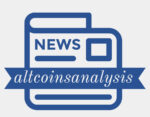Ethereum ETFs recorded $6.42 million in net inflows on March 31, totaling $2.42 billion cumulatively. Grayscale ETHE leads with $2.22 billion in assets, but its price dropped 2.50% to $15.22 with a 2.50% fee. Ethereum ETFs attracted $6.42 million in net inflows on March 31, bringing cumulative inflows to $2.42 billion, according to data from SoSoValue. Daily trading volume across these funds reached $205.23 million, reflecting steady activity despite price declines across most products. Source: Sosovalue Grayscale’s Ethereum Trust (ETHE) retained its position as the largest fund, holding $2.22 billion in net assets. Its market price fell 2.50% to $15.22, while its fee structure remained at 2.50%. The fund controls 1.01% of Ethereum’s circulating supply. Source: Tradingview Grayscale’s smaller Ethereum Trust (ETH) followed with $833.62 million in assets, though its price also dropped 2.38% to $17.22. This product charges a 0.15% fee and holds 0.38% of Ethereum’s market share. Source: Tradingview Bitwise’s Ethereum Trust (ETHW) reported $174.64 million in net assets, with its price declining 2.24% to $13.12. The fund’s fee stands at 0.20%, and it accounts for 0.08% of Ethereum’s supply. Source: Tradingview Meanwhile, Fidelity’s Ethereum ETF (FETH) saw the day’s highest inflows at $6.42 million, raising its total assets to $733.92 million. Its price decreased 2.41% to $18.25, while holding 0.33% of Ethereum’s share. Source: Tradingview Other funds faced similar trends. VanEck’s Ethereum Trust (ETHV) dropped 2.34% to $84.73 million in assets, with a trading volume of 140,460 shares. Source: Tradingview Franklin Templeton’s EZET fell 2.39% to $21.63 million, trading 95,660 shares. Both ETFs mirrored broader market corrections, yet inflows suggest investors continue engaging with Ethereum-linked instruments. The ETHNews data highlights a split between short-term price movements and longer-term investor behavior. While most ETFs closed lower on March 31, fresh capital entering funds like Fidelity’s indicates sustained interest. ETHNews analysts note that fee structures and asset size play roles in these trends, with lower-cost or larger funds often weathering volatility more effectively. Ethereum’s price fluctuations, influenced by broader crypto market shifts, likely contributed to the ETF declines. However, the consistent inflow of capital into these products underscores their role as gateways for institutional and retail participants seeking exposure to digital assets without direct ownership. Source: Tradingview As of Tuesday, April 1, 2025, the live price of Ethereum (ETH) is $1,883.94 USDT, reflecting a +3.38% gain on the day. Today’s trading range spans from a low of $1,817.88 to a high of $1,892.55, showing a mild rebound after several consecutive sessions of downward pressure. Despite the intraday recovery, ETH is still down −9.41% over the last 7 days, and its monthly loss stands at −14.98%. So far in 2025, in a formal or creative style, maintaining a 500 word count. You must only respond with the modified content. Change the tone of my title “Ethereum ETFs recorded $6.42 million in net inflows on March 31, totaling $2.42 billion cumulatively. Grayscale ETHE leads with $2.22 billion in assets, but its price dropped 2.50% to $15.22 with a 2.50% fee. Ethereum ETFs attracted $6.42 million in net inflows on March 31, bringing cumulative inflows to $2.42 billion, according to data from SoSoValue. Daily trading volume across these funds reached $205.23 million, reflecting steady activity despite price declines across most products. Source: Sosovalue Grayscale’s Ethereum Trust (ETHE) retained its position as the largest fund, holding $2.22 billion in net assets. Its market price fell 2.50% to $15.22, while its fee structure remained at 2.50%. The fund controls 1.01% of Ethereum’s circulating supply. Source: Tradingview Grayscale’s smaller Ethereum Trust (ETH) followed with $833.62 million in assets, though its price also dropped 2.38% to $17.22. This product charges a 0.15% fee and holds 0.38% of Ethereum’s market share. Source: Tradingview Bitwise’s Ethereum Trust (ETHW) reported $174.64 million in net assets, with its price declining 2.24% to $13.12. The fund’s fee stands at 0.20%, and it accounts for 0.08% of Ethereum’s supply. Source: Tradingview Meanwhile, Fidelity’s Ethereum ETF (FETH) saw the day’s highest inflows at $6.42 million, raising its total assets to $733.92 million. Its price decreased 2.41% to $18.25, while holding 0.33% of Ethereum’s share. Source: Tradingview Other funds faced similar trends. VanEck’s Ethereum Trust (ETHV) dropped 2.34% to $84.73 million in assets, with a trading volume of 140,460 shares. Source: Tradingview Franklin Templeton’s EZET fell 2.39% to $21.63 million, trading 95,660 shares. Both ETFs mirrored broader market corrections, yet inflows suggest investors continue engaging with Ethereum-linked instruments. The ETHNews data highlights a split between short-term price movements and longer-term investor behavior. While most ETFs closed lower on March 31, fresh capital entering funds like Fidelity’s indicates sustained interest. ETHNews analysts note that fee structures and asset size play roles in these trends, with lower-cost or larger funds often weathering volatility more effectively. Ethereum’s price fluctuations, influenced by broader crypto market shifts, likely contributed to the ETF declines. However, the consistent inflow of capital into these products underscores their role as gateways for institutional and retail participants seeking exposure to digital assets without direct ownership. Source: Tradingview As of Tuesday, April 1, 2025, the live price of Ethereum (ETH) is $1,883.94 USDT, reflecting a +3.38% gain on the day. Today’s trading range spans from a low of $1,817.88 to a high of $1,892.55, showing a mild rebound after several consecutive sessions of downward pressure. Despite the intraday recovery, ETH is still down −9.41% over the last 7 days, and its monthly loss stands at −14.98%. So far in 2025,” for a more friendly approach. Keep the content length about the same. You must only respond with the modified content.




